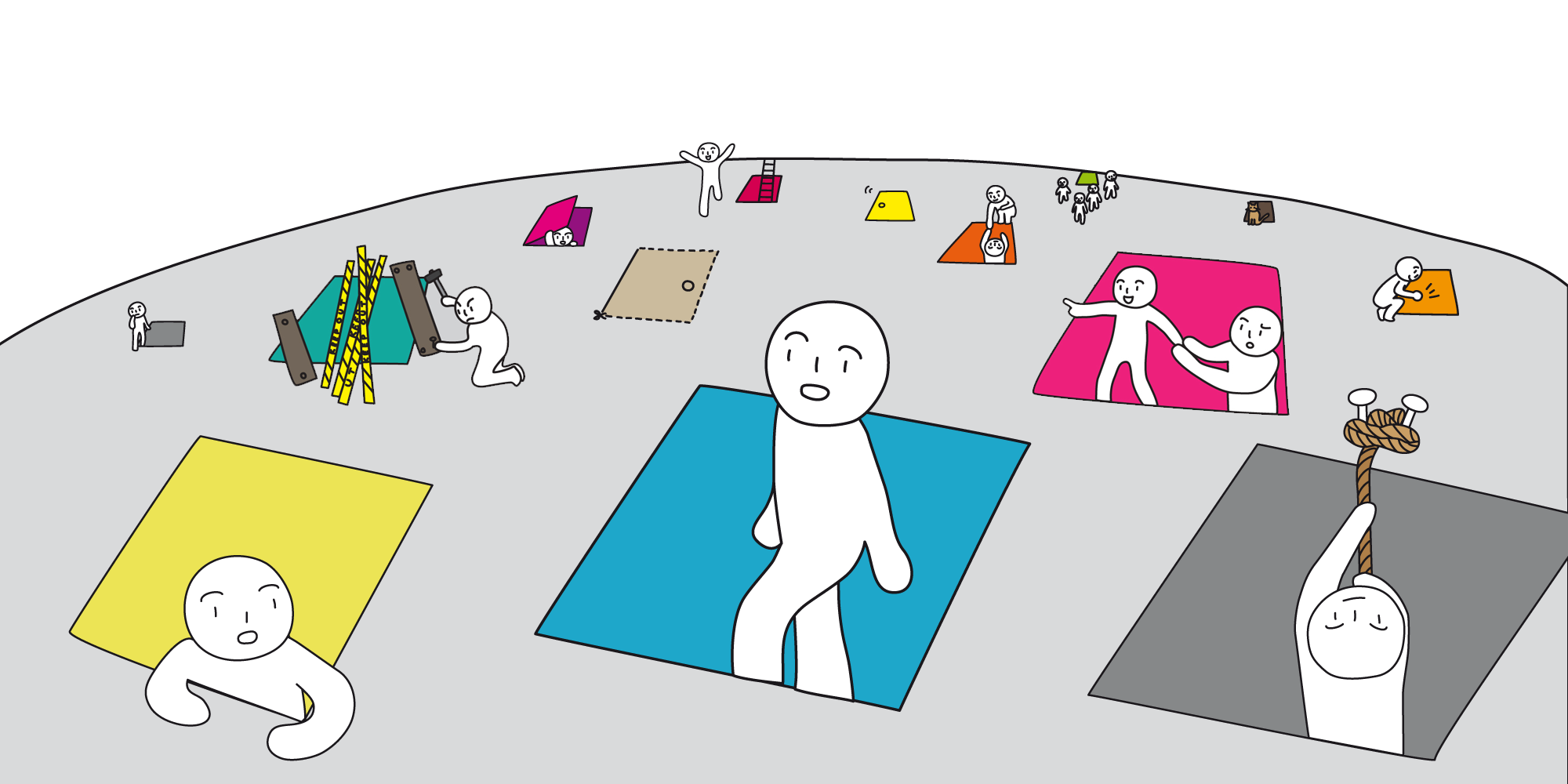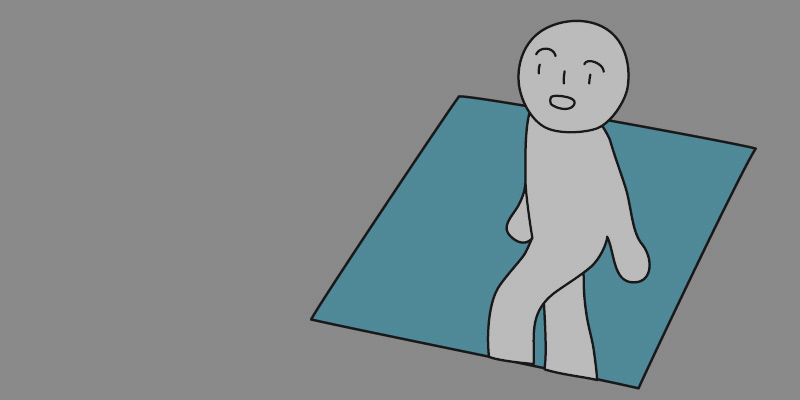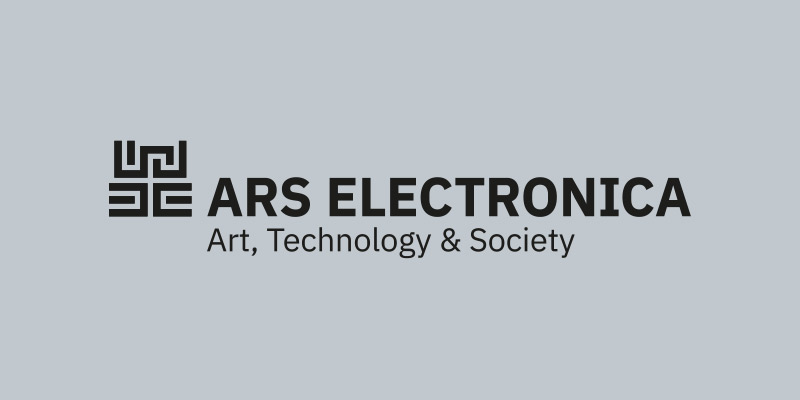Programm

VALIS
Digital Research Unit in Art and Design at the Esad Saint-Étienne/Ensba Lyon
For this first presentation in the framework of Ars Electronica, we chose to explore concepts of “science-fiction,” considered as a domain that provides forms but also imaginary elements to be renewed. The exhibition presented here is therefore a first approach which summons various references to fields such as archeology, music, robotics or video games, passing through several experiments with media (code, 3D, sound, performance, deep learning …). VALIS “Vast Living Intelligent System” is a reference to the late work of Philip K. Dick.
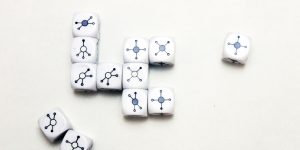
X-or
Hakan Lidbo (SE)
The roll of a dice determines the board and the pieces in the complex strategic game *X-or*.

Blockchain.art, San Francisco
blockchain.art is excited to present its news portal focused on breaking news and updates in the non-fungible token (NTF) art market with feature content highlighting the most intriguing creations, artists, makers, investors, and collectors in the field.
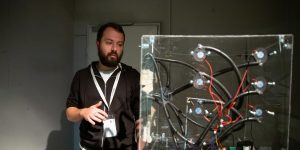
I Am Here
Dorin Cucicov (MD)
I Am Here is an interactive experience powered by human interaction. An ambiguous digital presence invites you to an exploratory dialogue. How well can you understand the entity and its intentions? Does the movement influence the digital form, or does the form dictate your movements? I Am Here explores the possibilities of outsourcing human personality to digital forms. It attempts to blur the differences between interhuman and human-computer interaction.

Smart Traffic – Augmented Cyclists meet Automated Vehicles
CARISSMA — Center of Automotive Research on Integrated Safety Systems and Measurement Area, Technische Hochschule Ingolstadt (DE)
How will city life be in a world controlled by intelligent and cooperative transportation systems? Experience future traffic as either a cyclist or an operator of an automated vehicle in an immersive virtual world, and become part of a real scientific experiment addressing traffic safety.

Facebook Algorithmic Factory
Vladan Joler (RS)
Facebook Algorithmic Factory sheds light on the invisible processes that take place inside the world’s largest social network. Inside this black box, non-transparent algorithms are deciding what kind of content will become a part of our reality, what will be censored or deleted, which ideas will spread and what news will gain most visibility. They are also defining new forms of labour and exploitation.

Big Robot Mk.2
Hiroo Iwata (JP)
This video installation shows the largest movable robot in the world. Large humanoid robots, such as Gundam or Macros, are popular in Japanese animation and Manga. What if robots of this kind appeared in the real world? The existence of real large-scale robots may inspire the audience to be courageous. Thus, it has potential as an art form. The Big Robot Project aims to develop the world’s largest rideable robot. The Big Robot Mk.2 is an extension of the *Big Robot Mk.1* which was exhibited at Ars Electronica 2016.
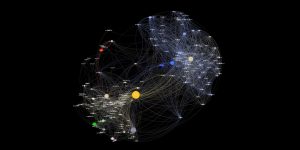
Topography of the Information Warfare
Vladan Joler (RS)
Governments, political actors and companies are now experimenting with more sophisticated ways (harder to detect and document) of exerting internet control and disturbance in the information flow. The aim of this analysis was to explore (and visualize) some of the forms and methods of interventions that various political actors or power structures have been using to control and conquer various online spheres. Here we mostly focused on hidden, indirect actions, interventions by unknown actors, companies without visible ties to government officials, political troll armies and troll lords and “artificial” entities. This map is based on a 5-year internet monitoring process and over 400 different cases of violations documented and analyzed by the Share Foundation. Though different methods represented in this map are observed in our local context, we believe that they are also being used worldwide in similar forms. This map is an attempt to interconnect most of those issues into one map, one possible narrative, one possible reading of those processes.

bitTOWER
Wu Juehui (CN)
bitTOWER is inspired by the uroboros and each element of the installation acts as a visual metaphor. The scaffold matrix creates a space with a limited mass, as though the epidermis of the excessively expanding city has been torn apart and exposed its internal organs. The cycle of lights act as moon and sun, with shadows of mottled steel pipes expanding the borders of the matrix. The interplay of the lights and projected digital images create a virtual world shifting swiftly between night and day. The spiral cases inside the matrix overlap, and just like the uroboros, beginning where it also ends. The immersive environment opens a wormhole to another dimension for the audience, with the synesthetic ceremony leading to a sense of reverie.

Trauma Mapping
Aksiniya Peicheva (BG)
Trauma Mapping aims to develop a methodology for creating “geographical” maps of physical injuries, illnesses or other kinds of damage experienced by the body. It seeks to explore the inner processes of the suffering of stray animals from the streets of Bulgaria; to look for visual traces, left by traumatic events: their projection on the body, the organism’s reaction, the way the cells are being rearranged by what has happened.
